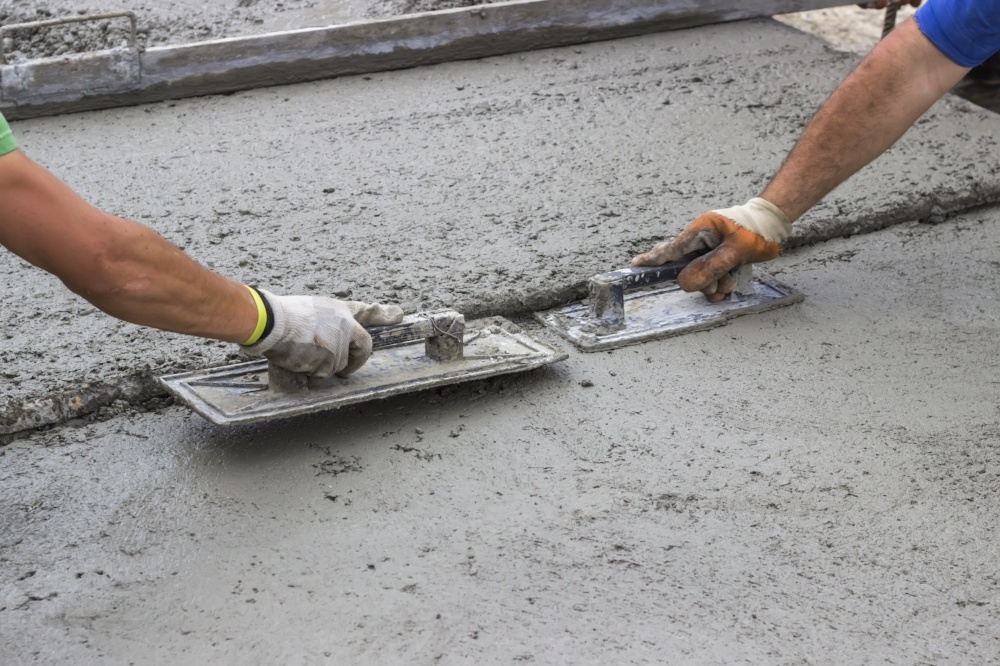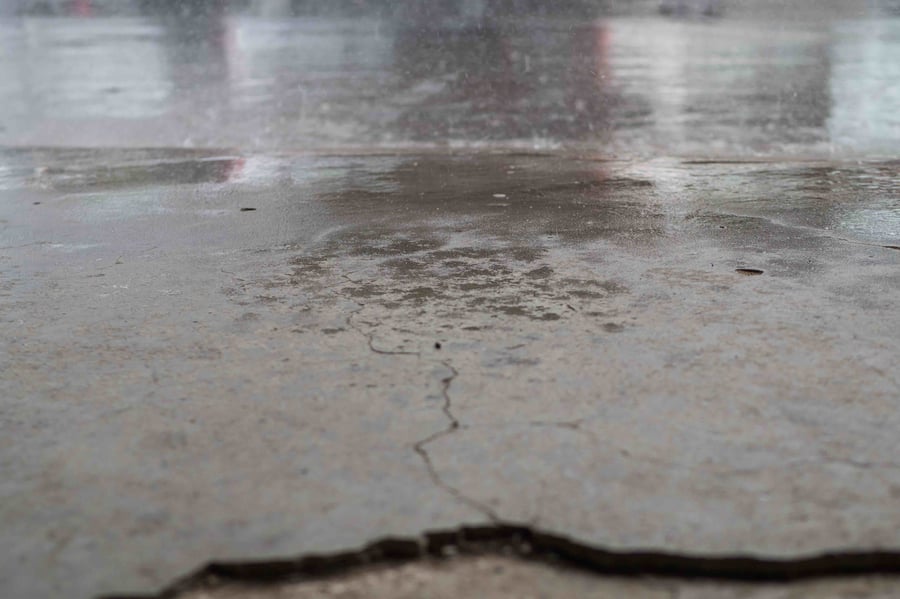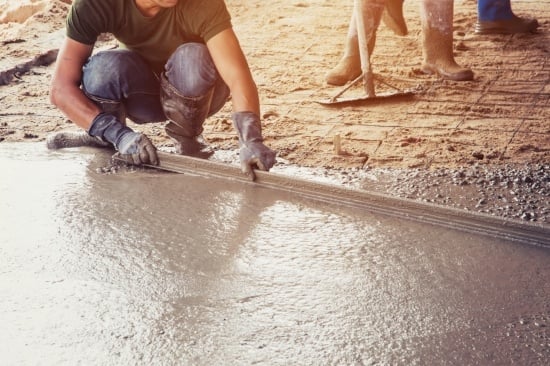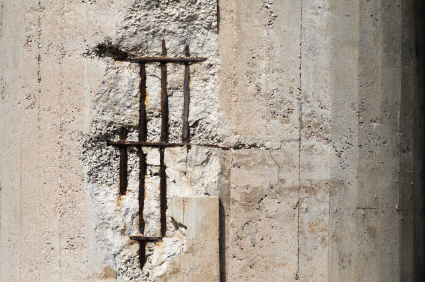Do Concrete Moisture Meters Give Quantitative Readings?

To protect their professional reputations and ensure the long-term quality of their work, contractors need quantitative data. Knowing exactly how much moisture is present in construction materials is a must for controlling specific risks that lead to refunds, callbacks and material waste.
Take, for example, newly-poured concrete. Whether it’s a foundation, floor slab, or screed, concrete needs to be properly cured before it can be built over. However, the time it takes for a slab of concrete to dry out enough to work with can vary greatly because of factors such as slab thickness, ambient humidity, variables in the concrete mixture, temperature, etc.
To reliably establish whether or not concrete is ready to work with, you need a quantitative assessment of the moisture conditions deep in the slab. By knowing the moisture conditions deep in the slab, you can better predict what will happen with a slab of concrete and make accurate assessments of whether or not it’s ready to be built over yet.
So, what about concrete moisture meters? Do they provide quantitative readings? They do not. But, they have other uses. Here’s an explanation:
How Concrete Moisture Meters Actually Work
Concrete moisture meters use the ASTM F2659 standard to obtain qualitative reading results—NOT quantitative ones. Their basic function is to use the reference scale setting of a pinless moisture meter to scan the top inch or so of concrete.
As noted in the ASTM International Standard Guide for Preliminary Evaluation of Comparative Moisture Condition of Concrete, Gypsum Cement and Other Floor Slabs and Screeds Using a Non-Destructive Electronic Moisture Meter:
“This guide is not intended to provide quantitative results as a basis for acceptance of a floor for installation of moisture sensitive flooring finishes systems. Test Methods F1869, F2170, or F2420 provide quantitative information for determining if moisture levels are within specific limits. Results from this guide do not provide vital information when evaluating thick slabs, slabs without effective vapor retarders directly under the slab, lightweight aggregate concrete floors, and slabs with curing compound or sealers on the surface.”
Basically, ASTM’s guide to using pinless moisture meters for concrete states that the readings gained using this method aren’t precise readings of moisture content. Instead, this testing method is designed to get a comparative reading of moisture in the top inch or so of concrete.
Why Quantitative Readings Matter
It’s a common practice for contractors to use a “reference scale” when assessing moisture in building materials that only provides a qualitative reading of moisture rather than an absolute measurement. However, this is generally only recommended as a means to identify if there is a moisture-compromised material present—not as a way to determine the full severity and extent of the issue.
Relying on qualitative readings of the top inch of concrete on professional jobs means putting your business and reputation on the line for a guess based on bad information.
Qualitative readings do have a use. But, if you’re doing any kind of extensive construction over the concrete, then you’re better off using the ASTM F2170 standard that uses in-situ probes to get moisture readings deep in the slab.
When Should I Use the ASTM F2659 Guideline?
So, when would a surface-level, qualitative assessment of concrete moisture be appropriate?
A qualitative reading of concrete moisture may be useful for:
- Taking Preliminary Measurements. A qualitative moisture reading can be a quick way to determine if concrete needs more testing.
- Verifying Surface Condition Prior to Applying Sealant. One way to protect concrete slabs from the elements is to add a sealant or floor covering product to the surface layer. These sealants can also keep moisture in the slab from escaping into the environment above it. Qualitative readings can be a quick way to see if the surface layer is dry enough to apply sealant to.
- When Concrete Slabs are Especially Thin. While rare, concrete can be poured in exceptionally thin layers where the reading of the top inch of the slab may account for the majority of the slab’s thickness.
The Procedure for Taking Qualitative Readings in Concrete
To take a qualitative reading of concrete moisture with a pinless meter under the ASTM 2659 guidelines, users need to:
- Turn off any tools designed to accelerate drying (ASTM specifically recommends at least 96 hours prior to taking the reading);
- Check for standing water on the concrete’s surface;
- Eliminate any adhesive or other “deleterious residues” from the concrete’s surface;
- Ensure that the scanning plate of the meter is flush with the concrete’s surface; and
- Employ the reference scale mode of that meter.
How Can I Get Quantitative Readings of Concrete Moisture?
If you want the most accurate measurement of moisture in a concrete slab possible, then you’ll have to use the ASTM F2170 standard. This standard calls for the use of a thermo-hygrometer with in-situ probes to check the moisture conditions deep in a concrete slab via relative humidity (RH) measurements.
Measuring RH deep in a slab gives you a much more accurate idea of how much moisture is present in your concrete and whether or not that slab is ready to be built on.
This measurement method requires you to drill holes into the concrete, install sensor sleeves, and give them time to acclimate (about 72 hours). While this method isn’t as immediate as a surface-level scan with a moisture meter, it’s far more accurate and reliable for avoiding the callbacks, waste, and refunds caused by a bad flooring job.
Protect your reputation, your business, and your profits with the right tools for the job.
Subscribe to Our Blog
Post Related

When Are Moisture Meters Useful for Concrete Testing?


